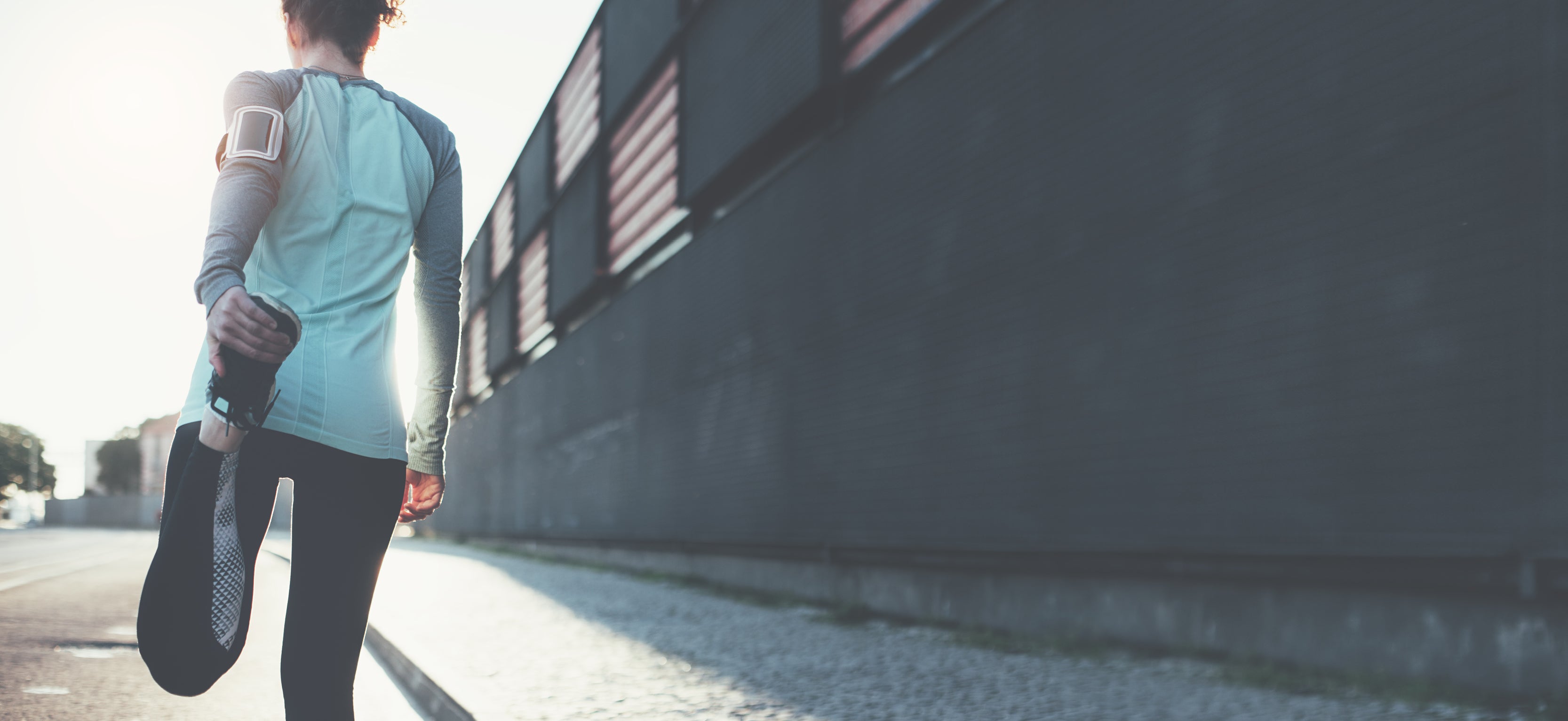Recovering from anterior cruciate ligament (acl) surgery can be a long, painstaking journey. There are no shortcuts, and it can take anywhere from 6 to 9 months for a person to fully recuperate. It’s important to not get discouraged and to stay optimistic during this time: on average, 85 to 90% of people undergoing acl reconstruction surgery have a full recovery.1 In order to be part of the success rates, it’s important to follow doctor’s orders and take the specific steps necessary to heal properly after surgery.
Phase One: 2-6 Weeks After Surgery
The rehabilitation process starts approximately 2 weeks after surgery. The cast may be off and during this time, RICE is normally prescribed (rest, ice, elevation, compression) in an attempt to reduce pain, inflammation and swelling.
For more information on RICE, see a previous post HERE.
Diet: Another factor to consider during this time is diet. There are certain foods believed to cause inflammation while other foods are rumored to reduce it. The following foods are believed to cause inflammation and avoiding them may aid in the recovery process:
- Processed meats
- Syrup and soft drinks
- Fast food
- Refined grains
- Trans fats
Instead of eating the foods listed above, aim to eat the following foods that are known for their anti-inflammatory properties:
- Spinach
- Tomatoes
- Garlic
- Cabbage
- Lemon
- Onions
- Mustard greens
- Cabbage
- Carrots
- Cauliflower
- Bell peppers
- Cherries
Range of motion: As the pain, swelling and inflammation decreases, a person can start working on increasing their range of motion. (In the beginning this simply means regaining the ability to bend and straighten the leg 135 degrees.) An example is simply sitting in a chair with the foot planted on the floor and straightening the leg until it is fully extended. Slowly bending and straightening the knee daily helps to prevent the area from becoming stiff and gradually regaining the range of motion. This movement helps the injured area become stronger.
Stretching and flexibility: Stretching can help increase a person’s range of motion as well as rehabilitate the injured area. Many times, when a person is injured, the supporting muscles work harder to compensate for the injury. As a result, they have an increased risk of overuse which could lead to those becoming injured as well. To decrease this possibility, stretching and increasing the flexibility of the hips, ankles, spine, quadriceps and hamstrings is advised.
Two great stretches for acl injuries are the Seated Hamstring Stretch and Quadriceps Stretch:
Seated Hamstring Stretch: Sit on the floor or in a chair with the legs extended. Lean forward and slowly inch the hands down the leg as far as comfortable and hold for several seconds then slowly release going back to the starting position. Try to reach the shin, ankle, or feet.
Note: This stretch also activates the lower back, hips, abs, and calves.
Quadriceps Stretch: The quadriceps stretch can be done either standing, kneeling, or laying down. Slowly bend the leg back towards the glutes. If the right foot is raised, reach back with the right hand to gently pull the foot closer to the glutes. Hold for 15-30 seconds then release and repeat with the next leg.
Note: The hip flexor, hip joint, and quadriceps are all activated with this stretch.
Non Weight Bearing Exercises: In addition to stretching, non-weight bearing exercises will be encouraged by their physical therapist as a person’s range of motion and flexibility increases. These are exercises that do not put pressure on the knee. Examples of non-weight bearing exercises would be riding a stationary bike, swimming, elliptical trainer, or Stairmaster.
These exercises should be done at a low intensity to decrease any chances of reinjuring the knee and under a doctor’s supervision.
Phase Two: 7-14 Weeks After Surgery
At this point the knee is stronger and a person’s range of motion has increased to near normal levels. It is around this time a person can begin to perform more normal activities such as weight bearing exercises that help improve their balance and stability.
Balance and Stability: The anterior cruciate ligament stabilizes the knee joint, so it is critical that it’s fully healed to help decrease the risk of future injury. Balancing exercises activate the acl along with other joints and muscles, allowing them to work together in unison. Exercises like single leg balancing helps to improve the overall stability of the knee as well as the ankle, hip, and glutes.
Weight Bearing Exercises: As a person’s strength improves, they can incorporate weight bearing exercises into their rehabilitation program. This will primarily consist of exercises such as squats, lunges, and step ups. A physician may suggest wearing a knee brace to keep the knee stabilized during these exercises, even though some question if they are effective.
The Supporting Cast: In addition to the acl itself, it’s also important to strengthen the surrounding muscles and ensure they are functioning properly. Because of the injury to the acl, many of these muscles have been neglected and are weaker due to lack of use.
The Vastus Medialis Oblique (VMO) :The VMO is part of the quadriceps muscle and is slightly above and to the inside of the kneecap. It helps stabilize the patella and is active throughout leg movements. Even though the injury is to the acl, the VMO may need to be strengthened right along with it. In addition to lunges, doing wall squats with a swiss ball are another way to exercise the VMO.
The Kinetic Chain: When strengthening the acl, it’s important to be aware of the kinetic chain. In its simplest terms, this is a concept that describes how the upper and lower extremities are linked together during motion. Injuries such as an acl injury can disrupt the kinetic chain, possibly causing imbalances in the body’s movement, increasing the risk of further injury. Kinetic exercises can either be open chain or closed chain:
Open chain exercises are designed to focus on specific muscles, while closed chain exercises are compound movements involving many different muscle groups.
- Open chain exercises for the lower body are leg extensions and leg curls.2
- Closed chain lower body exercises are squats, lunges and power cleans.3
Both types are effective and should be used for strengthening the acl and the surrounding muscles including the glutes, thighs and hamstrings.
Cardio: Some individuals feel strong enough to walk or jog at this time. It should be noted that lateral movements, sudden movements and jogging on uneven surfaces should be avoided to prevent possibly reinjuring the knee. Riding a bike outdoors may be permitted as well, but clipless pedals should not be used as a person may twist their knee as they clip or unclip the pedal.
Phase Three: 15-17 Weeks After Surgery
After four months of rehabilitation, many individuals have approximately 75% of their strength back.4 Many can begin doing more advanced exercises at a low intensity.
Drills: To further strengthen the knee, athletes will start doing some form of running and agility drills at this time. Many of these drills are used to incorporate angled running and cutting, working the entire knee joint and its ligaments, albeit at a lower intensity:
- Running/jogging backward
- Jumping rope
- Zig-zag running
Phase Four: 18 weeks after surgery
This is a best case scenario as not everyone will be at this point 18 weeks after surgery. Some may not get to this point until week 25 or later. Each person is different and it’s critical they do not attempt to rush the recovery process because the final phase of rehabilitation is the most rigorous.
Full Contact: At this point, a person is close to 100% recovered and can begin to fully test their surgically repaired knee without limitation. Activities that can be attempted include the following:
- Soccer
- Volleyball
- Basketball
- Football
- Heavy squats and other leg exercises
Acl injuries are painful and can takes months to heal, but with patience and rehabilitation, many people can expect a full recovery in time.
For more tips on recovery and wellness visit our blog.
1https://www.hss.edu/conditions_knee-arthroscopy-acl-meniscal-other-problems.asp
2https://en.wikipedia.org/wiki/Open_kinetic_chain_exercises
3https://en.wikipedia.org/wiki/Closed_kinetic_chain_exercises
4http://www.aclrecoverysecrets.com/acl-surgery-recovery-timeline/





Leave a comment
All comments are moderated before being published.
This site is protected by hCaptcha and the hCaptcha Privacy Policy and Terms of Service apply.